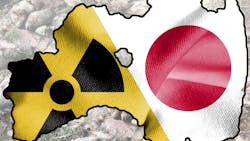Researchers Discover How Super-Hot Nuclear Fuel Behaves
The 2011 accident at the Fukushima-Daiichi plant in Japan inspired Argonne National Laboratory to study the behavior of plutonium oxide (PuO2) at extremely high temperatures. Building on previous research on uranium dioxide (UO2), scientists used advanced X-ray techniques at the Advanced Photon Source to measure the structure of molten PuO2.
“Argonne is probably the only place in the world capable of performing this very difficult type of experiment,” said Argonne Senior Physicist Chris Benmore in a recent news release. “We demonstrated the proof of principle in 2014 with UO2, and it took us until now to expand the capability to PuO2. The experiments involve complex instrumentation operating at extreme conditions.”
The experiment involved levitating small PuO2 samples on a gas stream and heating them with a laser to temperatures up to 3,000 K. This method allowed researchers to study the material without container contamination. The team discovered that liquid PuO2 exhibits some covalent bonding and has a structure similar to cerium oxide.
The study's results are crucial for modeling and designing safer nuclear energy systems. The research team also used machine learning and supercomputing to model electron behavior in the system, providing further insights into bonding mechanisms and safety parameters for mixed oxide fuels.
This collaborative effort, involving experts from various fields, demonstrates Argonne's unique capabilities in conducting complex experiments with nuclear materials. The findings, published in Nature Materials in April 2024, contribute to the ongoing improvement of nuclear energy systems and their safety.
